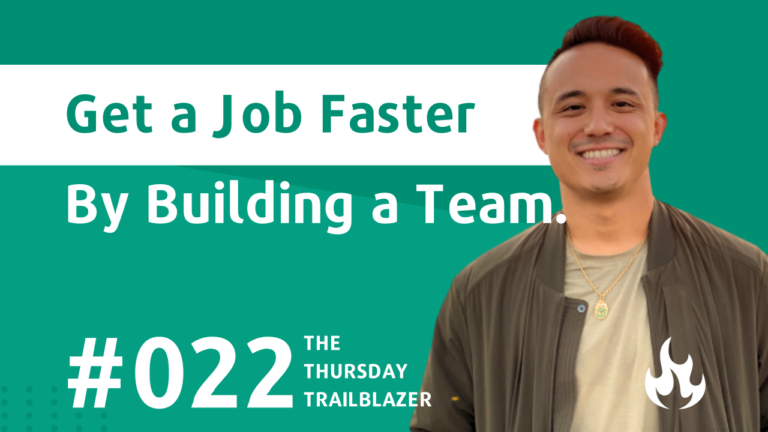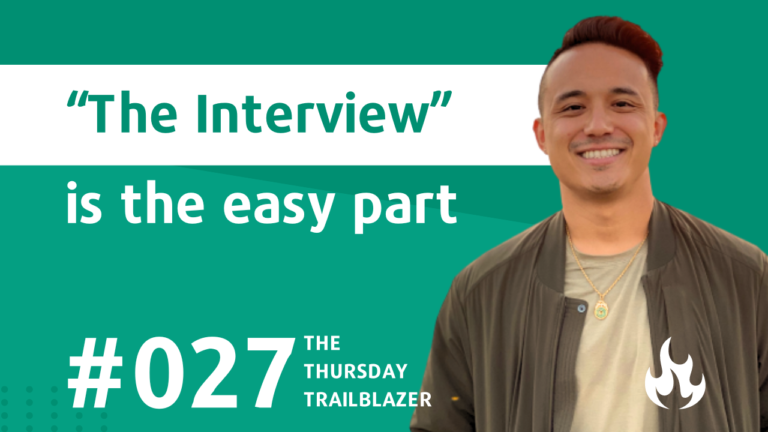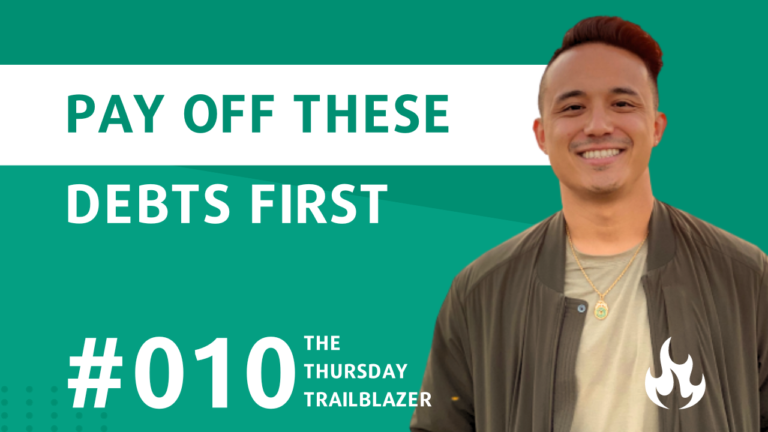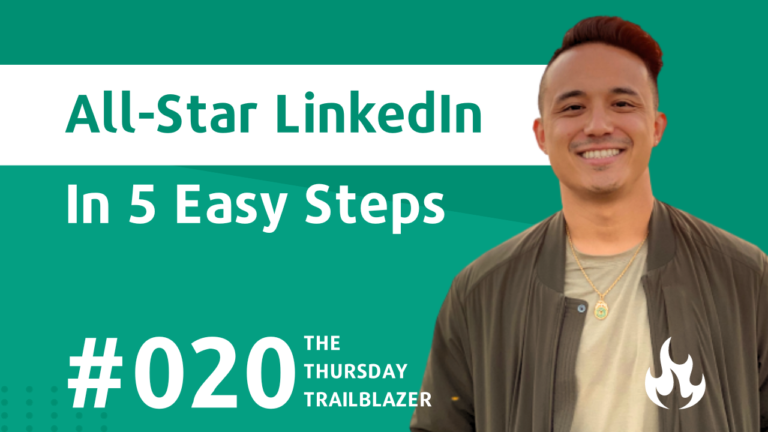T3 #021: How to Answer Interview Questions – Create Amazing Stories
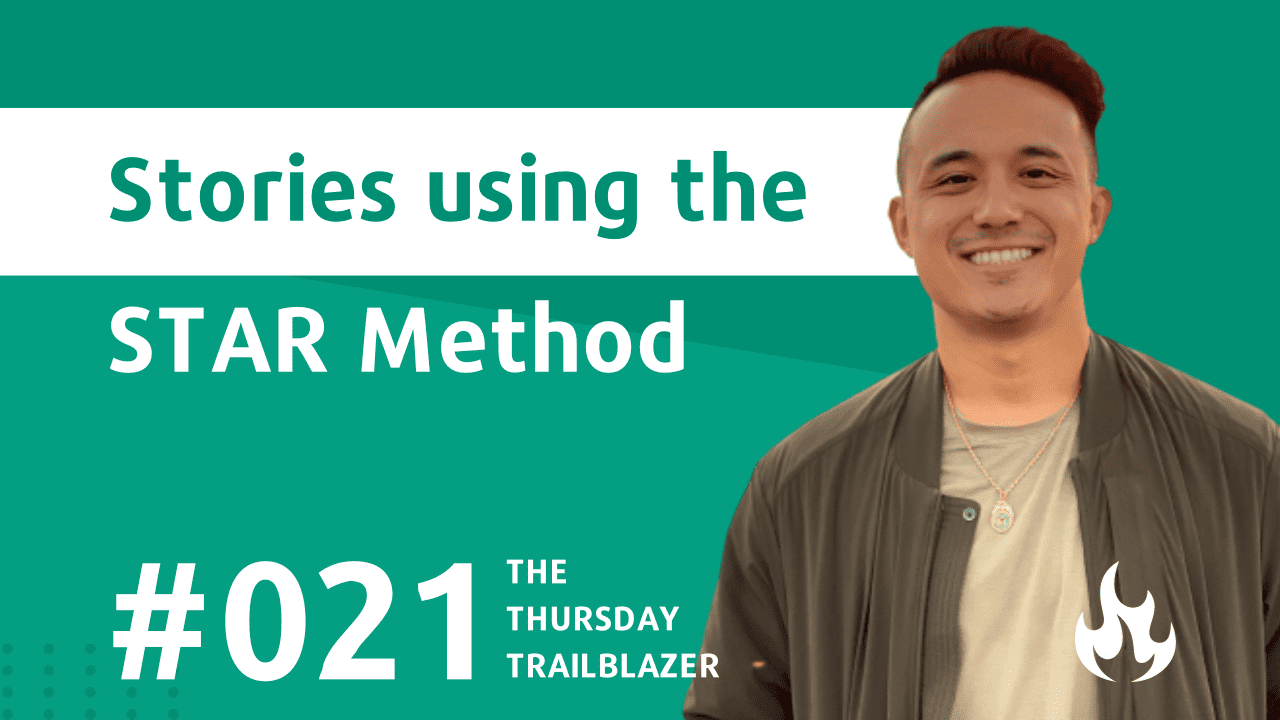
Use the STAR Method to Highlight Your Past Achievements
This is a special series of my newsletter – the sixth in a series of posts sharing insights, tips, and actions that you can implement when you are searching for a job either to leave your current one, or due to a recent layoff. The principles in the following series can be largely applied to both situations and adapted to your specific scenario. Best of luck in your journey!
Did you know there is actually a formula for how you should answer an interview question?
When an interviewer is asking a question – usually starting with “tell me about a time…” – there are specific things they are listening for.
And because we know that they are listening for a certain response…
…we can tailor our answers to each question perfectly.
Now, if you are keeping up with the series you just finished updating your resume and LinkedIn, but you’re probably thinking to yourself…
…now we are talking about interview prep?
What about applying and getting the callback!?
This is actually VERY intentional because after going through these steps, you’ll be not only able to further improve your resume and LinkedIn…
…but also know how to perfectly complete any open-ended application questions or first-round recruiter screening calls.
Also, right now all of your past accomplishments are fresh in your mind.
You just went through the brainstorming process to complete your resume and LinkedIn.
We are going to leverage all those fresh stories in your mind and refine them by answering these three questions:
- What is the STAR Method?
- How do I incorporate my own experiences into the STAR Method?
- How to modify these stories to apply to every future question, cover letter, and more!
What is the STAR Method?
Developing and adopting frameworks, like the STAR Method, are sure-fire ways to avoid missing any key pieces of information.
I first heard about the STAR Method in college…
…and I’ve used it time-and-time again whenever I am actively looking for a job or networking with other business professionals?
Networking?
That’s right, even networking because it’ll help you avoid using confusing industry terms (aka jargon),
And tell a story that person can remember about you.
Yes, the STAR Method is a story-telling framework that will help make you, and your accomplishments memorable!
- Situation: Set the stage! In 1-2 sentences describe the problem that you were faced with, and why that problem mattered.
- Task: How were you involved with that problem? What were you responsible for coming up with the solution? Maybe even lead a team?
- Action: Okay, so we know of the problem and what you were tasked to do it – how did you execute those tasks?
- Result: After your involvement, what were the outcomes of your actions? Was it successful or unsuccessful? If it wasn’t successful, what did you learn from it?
How do I incorporate my own experiences into the STAR Method?
Most of the time people are going to jump right into answering behavioral questions.
I think that is wrong.
Answering specific questions provides less flexibility to the scenarios you come up with because you’re training yourself for those specific questions.
What happens when someone asks a question you didn’t prep for?
Now I get it, coming up with “good” situations to mention can be difficult…
…but that is more in your head than you may think.
Since you just finished revising your resume, I would start there!
For each accomplishment (or bullet description) that you included –
Provide additional details based on each aspect of the STAR Method.
Let’s take a past example of an accomplishment we used during the resume revision article:
Increased sales by 20% in 6 months across 13 locations by developing a sales onboarding handbook that was used to train 27 new hires
Here is how I would think through each aspect of the STAR Method with this example:
- Situation: The sales team wasn’t hitting quota month over month.
- Task: As a team lead, I needed to identify the root cause and provide a solution we could implement in the coming months.
- Action: After receiving feedback from our team, I concluded that we needed to develop a sales handbook that new and existing team members could reference to further their product knowledge and handle objections.
- Result: After drafting a new sales handbook and hosting multiple workshops, sales increased by 20% over the next 6 months across 13 locations after being adopted by 27 hires
You can continue to refine the details…
…but you are starting to gain some momentum!
Continue to repeat that process for each accomplishment on your resume.
How to modify these stories to apply to every future question, cover letter, and more!
Now that you have a list of scenarios elaborating on your resume…
…you can start to use these stories for so much more!
This is the step where I would usually start to answer some sample behavioral questions.
Here are some sample behavioral questions:
- Give me an example of a time you had a conflict with a coworker.
- Tell me about a time you made a mistake.
- How do you handle pressure at work or school?
- Tell me about your proudest professional accomplishment.
- Describe a time you failed and how you dealt with it.
- Tell me about a time you went above and beyond.
As you continue through them, you’ll also start to realize which ones you vividly remember with details.
Those are the ones that you’ll use as your pillar stories in the future!
To help you get started, I’ve created a free template (Select: Notion | Google Doc) that you can use.
This way you can focus more on creating your STAR stories and less on the format of a document. 😉
As you go through each one – add any missing details to the STAR stories that you already put together.
You’ll notice that most of the stories you developed for your accomplishments will already answer most of these.
Congrats! 🥳
You are now prepared with a list of stories you can share to answer any upcoming open-ended questions on job applications…
…or even during recruiter screening calls.
Summary
After you complete this, you’ll probably want to go back and refine your resume and LinkedIn.
Resist that urge.
Do it if you feel like you must, but remember –
refinement and optimization can take an endless amount of time.
Set these STAR stories aside…
…as this will become a helpful resource in the future filled with details (and a format) to share your accomplishments in a way that almost anyone can understand.
Next week we’ll dive into building your job seeking machine – starting with how to leverage other companies to do some of the searching for you. 🙂
💡 Action Steps
📔 Create your own stories using the STAR Method (45 minutes). Create at least 4 stories highlighting your past accomplishments using the above STAR Method. To help you get started, I’ve created a free template (Select: Notion | Google Doc) that you can use.
📚 Other Notable Resources
- Last Week’s Post: How to Make an All-Star LinkedIn Profile in 5 Steps
- Free Resource: My Personal Resume Templates
- Free Resource: Personal Budgeting Template (works for couples too!)
Learn the tactics we should have learned in school without the trail-and-error.
Join me and 67+ subscribers to The Thursday Trailblazer. Every Thursday morning, you’ll receive 1 step-by-step insight to help you level up in the areas of personal finance or career development.

